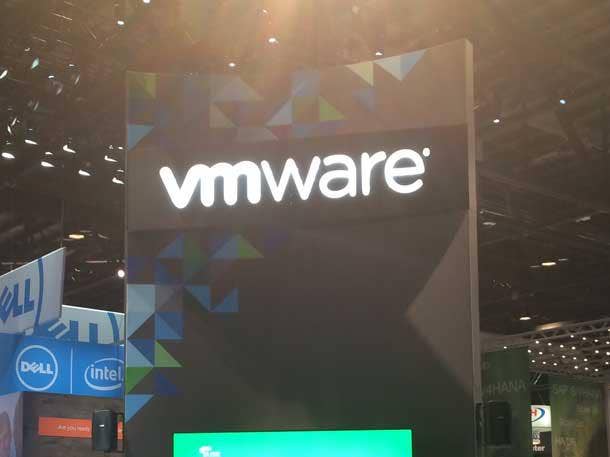VMware Reveals Its Roadmap To Kubernetes Dominance
Building off its PKS service with soon-to-be subsidiary Pivotal, VMware is preparing to launch a build-out of its container portfolio, which will culminate with a native integration of Kubernetes into vSphere

VMware revealed its coming broadside on the red-hot container market Monday by stepping up efforts to become a Kubernetes powerhouse with a slate of products in the pipeline.
The centerpiece of its Kubernetes strategy is VMware Tanzu, a portfolio of slated products and services that will enhance the current capabilities of VMware's Pivotal Container Service (PKS). Tanzu launches with a cross-cloud Kubernetes management console called Tanzu Mission Control, and, at some later date, will yield a fully native Kubernetes environment within vSphere.
Tanzu will serve as an onramp for PKS customers to broaden their abilities to build, run and manage containerized apps, VMware CEO Pat Gelsinger told attendees of the VMworld 2019 conference in San Francisco.
"We will be the leading enabler of Kubernetes," Gelsinger said in his keynote.
[Related: VMware And Pivotal: What Would A Merger Mean For The Cloud Foundry/Kubernetes Debate]
That vision is a far cry from a few years back, when many saw the advent of containers as a potentially existential threat to VMware's league-leading virtualization business.
In one of the industry's great course corrections in recent years, VMware pivoted to embrace the emerging technology. That strategy ultimately yielded PKS, a joint Kubernetes platform built with Pivotal, soon to become a subsidiary.
While Pivotal, which has been transforming its cloud-native development platform to run atop Kubernetes, will play an important role in VMware's container strategy, a smaller acquisition completed last year laid the cornerstone of the Kubernetes build out.
The deal for Heptio brought under VMware's roof two Google veterans who were the original creators of the container orchestrator technology. Joe Beda, a Heptio founder and the first to commit code to the open source project, now oversees VMware's Kubernetes initiatives as a principal engineer.
VMware, with the coming set of Tanzu offerings, is looking to achieve a "Goldilocks level" between operators and developers, Beda said.
That means low enough to support any environment, but high enough to facilitate complex projects.
"What enterprises need is a secured and opinionated experience," Beda told Gelsinger on the VMware stage. The best company to do that is VMware, which is why Heptio "joined up," he said.
"In the build space, at the end of the day, it's really all about applications," Beda added, and VMware now has fostered a community of 5 million developers.
Gelsinger said VMware's vision for Kubernetes is a platform that offers consistency across all different environments.
"Today, we’re addressing that with VMware PKS, but if we’re really serious about Kubernetes – what would we do? How about building it into vSphere?" Gelsinger asked. "That’s exactly what we are doing.”
That work to embed Kubernetes into the flagship virtualization platform is progressing under the name Project Pacific.
"Project Pacific unites vSphere and Kubernetes, unites developers and operators. Project Pacific established vSphere as the platform for modern applications," Gelsinger said.
The deep integration will hit the market in an upcoming vSphere release.
"Operation teams will have one platform where they can manage all of their resources including virtual machines and Kubernetes resources, then application teams will get a self-service experience built on the proven Kubernetes API."
IT administrators will be able to provision and manage clusters, and set policies, directly from Mission Control that span the coming vSphere Kubernetes and virtual machine environments, PKS, as well as the major public cloud Kubernetes services: Amazon EKS and Microsoft AKS and Google GKS.
"We got them all," Beda said.
Jason Carolan, chief innovation officer at Flexential, a VMware services partner based in Charlotte, N.C., said almost half its customers are using containers right now, often to enable distributed edge apps.
"We see the Kubernetes support being key for next-gen native workloads," Carolan said. "We see the demand today, integrated with a strong security model. It’s exciting to see this natively being delivered into the [VMware] platform."
Peter Smails, chief marketing officer at Rancher Labs, a container startup that's been on the cutting edge of bringing to market cloud-native technologies like Kubernetes, sees VMware's commitment to the orchestrator as a boon to the entire ecosystem.
So far VMware has done a nice job of telling a high-level story of "build, run and manage," Smails said. But the actual release schedule for Tanzu components is still murky.
"If you're VMware, it makes perfect sense. They are the 800-pound gorilla in VMs. And Kubernetes is the absolute most-transformational technology since VMs," Smails said.
VMware has chosen a multi-cloud strategy, and enterprises see containers as essential to adopting heterogenous infrastructure, he said
As such, VMware needs a container story, especially in the face of IBM's $34 billion Red Hat deal.
"IBM said they are going to control the market with Red Hat," Smails said. "[VMware's] not going to cede that race.'
That competitive dynamic will benefit smaller players like Rancher and all others in the Kubernetes community, as a rising tide lifts all ships.
"This is good for the market because VMware is telling their base this is important, you have to have a Kubernetes strategy," he said. "Their primary audience is traditional IT and they are saying the next cosmic leap to go to multi-cloud is containers."